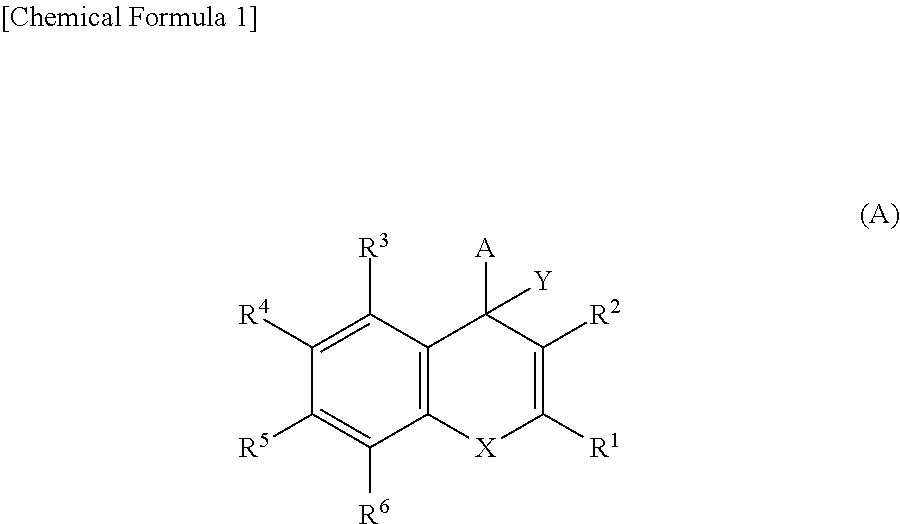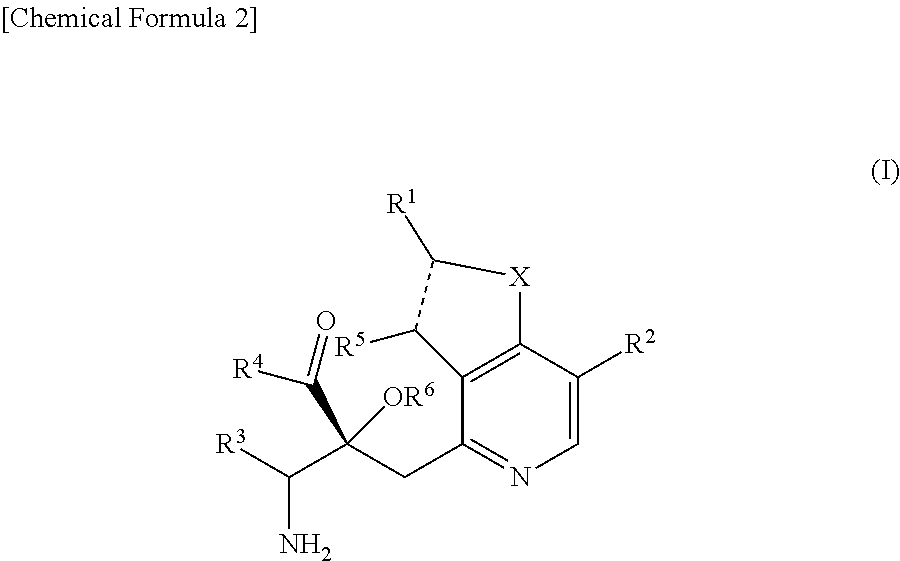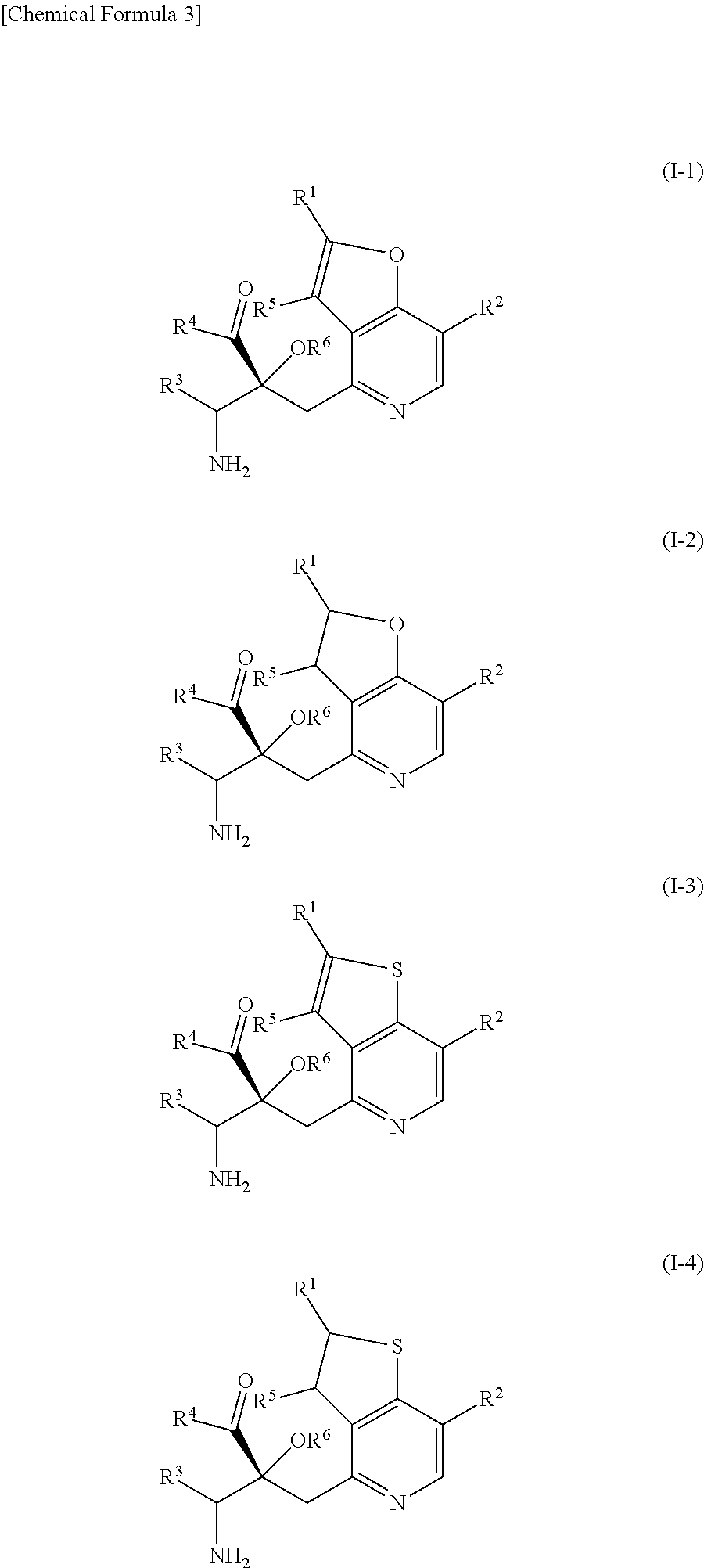Bicyclic pyridine compound
a technology of pyridine and compound, which is applied in the field of bicyclic pyridine compound, can solve the problems of increasing affecting the quality of life, and increasing the risk of hyponatremia, so as to reduce the risk of fracture, increase the endogenous avp level, and reduce the urine production
- Summary
- Abstract
- Description
- Claims
- Application Information
AI Technical Summary
Benefits of technology
Problems solved by technology
Method used
Image
Examples
example 1
[0158]A mixture of (3R,4R)-3-{[2-(2-cyclopropylethyl)furo[3,2-c]pyridin-4-yl]methyl}-4-[(ethylsulfanyl)methyl]-3-(methoxymethoxy)-1-(methoxymethyl)azetidin-2-one (65 mg), DOX (0.75 ml) and 6 M hydrochloric acid (1.5 ml) was stirred at 60° C. for 1.5 hours. After cooling the resulting reaction mixture with an ice-water bath, 6 M aqueous sodium hydroxide solution (1 ml) and DOX were added thereto and the mixture was concentrated under reduced pressure. The resulting residue was purified by ODS column chromatography (MeCN / 0.1% aqueous formic acid solution) to give (2R,3R)-3-amino-2-{[2-(2-cyclopropylethyl)furo[3,2-c]pyridin-4-yl]methyl}-4-(ethyl sulfanyl)-2-hydroxybutanoic acid (39 mg) as a solid.
example 2
[0159]TFA (25 ml) was added to a mixture of tert-butyl [(1R)-1-[(4R)-4-{[2-(2-cyclopropylethyl)furo[3,2-c]pyridin-4-yl]methyl}-2,2-dimethyl-5-oxo-1,3-dioxolan-4-yl]-2-(methylsulfanyl)ethyl]carbamate (6 g) and CH2Cl2 (50 ml) under ice-bath cooling, and the mixture was stirred at room temperature for 1 hour. The resulting reaction mixture was slowly added to a mixture of MeOH (85 ml) and 6 M aqueous sodium hydroxide solution (77 ml) under ice-bath cooling, and subsequently the mixture was stirred at 60° C. for 1.5 hours. Activated carbon was added to the obtained reaction mixture, the mixture was stirred at room temperature for 30 minutes and subsequently the insoluble material was removed by filtration. After cooling the obtained filtrate with an ice-water bath, 6 M hydrochloric acid was slowly added thereto to adjust pH to about 7, and subsequently the mixture was stirred at the same temperature for 1 hour. The produced insoluble material was collected by filtration and dried under ...
example 3
[0160]A 6 M aqueous sodium hydroxide solution (2 ml) was added to a mixture of (3R,4R)-3-{[2-(2-cyclopropylethyl)furo[3,2-c]pyridin-4-yl]methyl}-4-[(isopropyl sulfanyl)methyl]-3-(methoxymethoxy)-1-(methoxymethyl)azetidin-2-one (71 mg), MeOH (2 ml) and THF (2 ml) and the mixture was stirred at 70° C. for 5 hours. 6 M Hydrochloric acid (2 ml) was added to the obtained reaction mixture under ice-bath cooling and the mixture was concentrated under reduced pressure. MeCN (1 ml) and 1 M hydrochloride acid (3 ml) were added to the obtained residue and the mixture was stirred at room temperature for 3 hours. 6 M Hydrochloric acid (0.5 ml) was added to the obtained reaction mixture, the mixture was stirred at room temperature for 18 hours and subsequently at 40° C. for 2 hours. The reaction mixture was allowed to cool to room temperature and water was added thereto. The obtained mixture was concentrated under reduced pressure and the residue was purified by ODS column chromatography (MeCN / 0....
PUM
| Property | Measurement | Unit |
|---|---|---|
| Electrical conductance | aaaaa | aaaaa |
| Composition | aaaaa | aaaaa |
Abstract
Description
Claims
Application Information
 Login to View More
Login to View More - R&D
- Intellectual Property
- Life Sciences
- Materials
- Tech Scout
- Unparalleled Data Quality
- Higher Quality Content
- 60% Fewer Hallucinations
Browse by: Latest US Patents, China's latest patents, Technical Efficacy Thesaurus, Application Domain, Technology Topic, Popular Technical Reports.
© 2025 PatSnap. All rights reserved.Legal|Privacy policy|Modern Slavery Act Transparency Statement|Sitemap|About US| Contact US: help@patsnap.com



